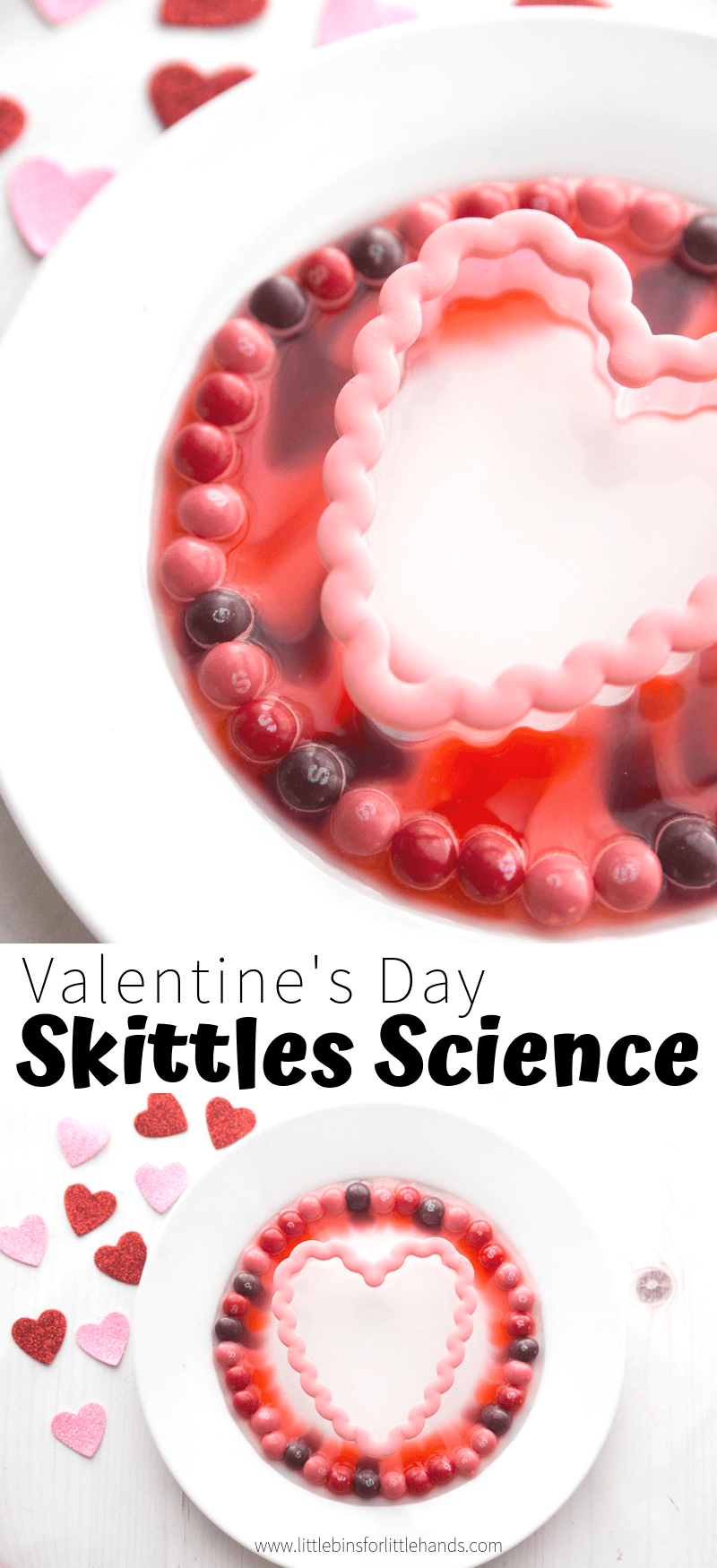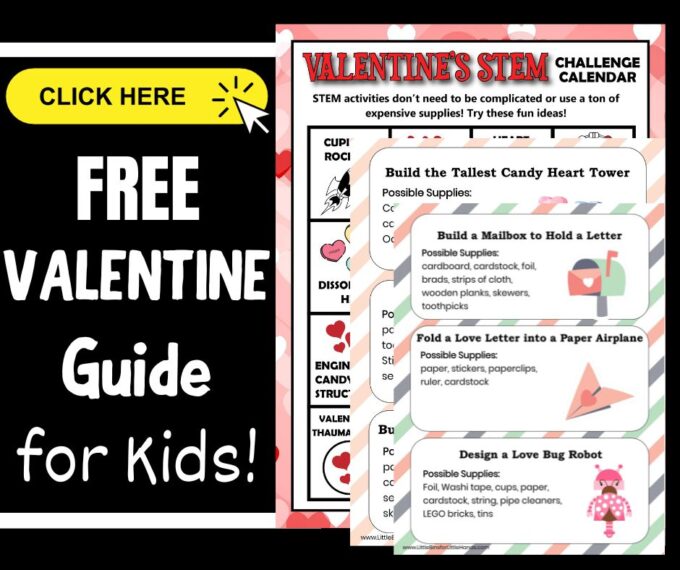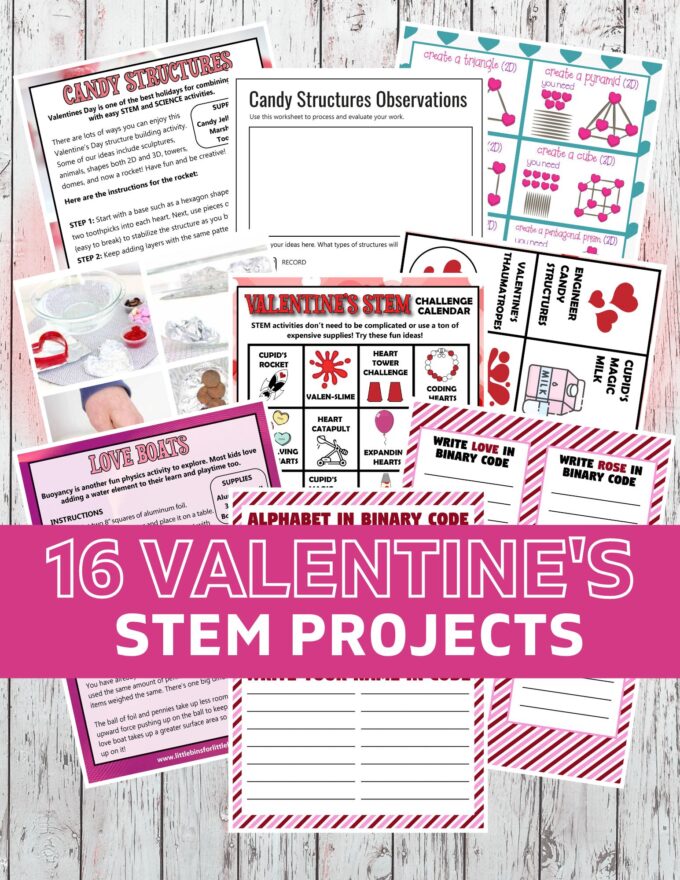Science, Valentine’s Day, and candy all in one perfectly simple science activity to try with the kiddos this February. Our Valentines Skittles science project is a fun twist on the classic skittles experiment. Quick results make it super fun for kids to observe, and try over and over again. Fun Valentine science experiments makes everyday learning and lesson planning easy.
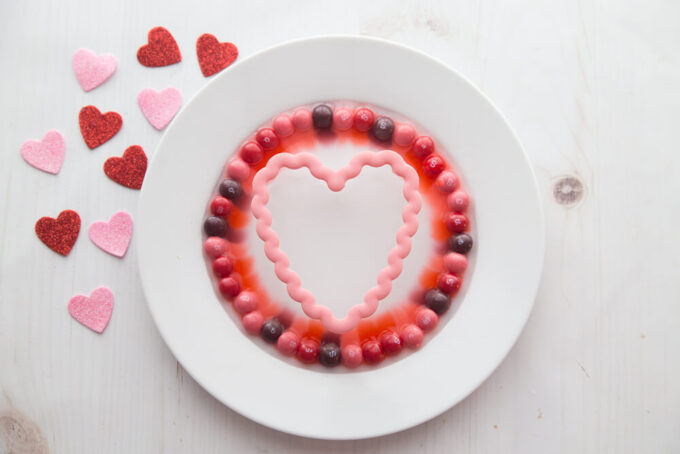
Explore Candy Science For Valentine’s Day
Of course, you need to try out candy science projects for Valentine’s Day!
Do you remember our amazing Classic Skittles Experiment?
I thought it would be fun to give the kids a heart-themed science activity, so we changed up the original a bit with colors and patterns.
Our Valentines skittles science project is an awesome example of diffusion, and kids love this fascinating candy science! Diffusion is the process by which particles move from an area of higher concentration to an area of lower concentration, resulting in their even distribution.
This Valentine’s Day science experiment uses a classic candy, Skittles! You could also try M&M’s compare the results! Check out our floating M’s here too!
Valentine’s Day Skittles Experiment Set Up
TIPS: You will want to set this up someplace where it won’t be bumped into but where you can easily watch the process unfold! Kids will have so much fun creating their own arrangements and patterns with the skittles.
Supplies:
- Purple, Pink, and Red Skittles Candy
- Water
- White Plates or Baking Dishes (flat bottom is best)
- Heart Theme Cookie Cutters
Instructions:
STEP 1. Set out a bowl of skittles or you can let the kids sort them out themselves!
Let your child have fun arranging them in a pattern around the plate alternating colors in any number they like- singles, doubles, triples, etc…
TIP: You can also try arranging the Skittles into a Valentine theme shape like hearts or arrows! It’s a great hands-on activity for kids of multiple ages to enjoy (especially if there’s a bit of tasting involved). Remember you can try this with M&M’s too and compare or contrast the results.
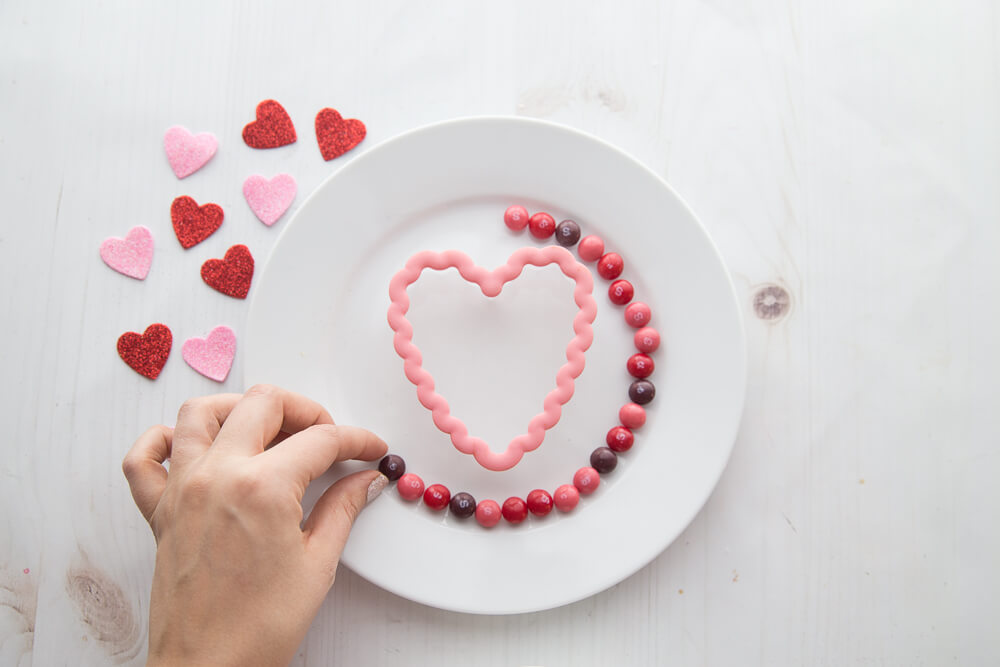
STEP 2. Pop in a Valentine shaped cookie cutter to the center of the plate just to add a little more of the theme and some additional color.
STEP 3. Before pouring in the water ask your child to form a hypothesis- What will happen to the candy when it is wet? This is a great time to work in a little deeper learning, you can find information to teach your child about the scientific method here.
STEP 4. Carefully pour water into the center of cookie cutter until it just covers the candy. Be careful not to shake or move the plate once you add the water or it will mess up the effect.
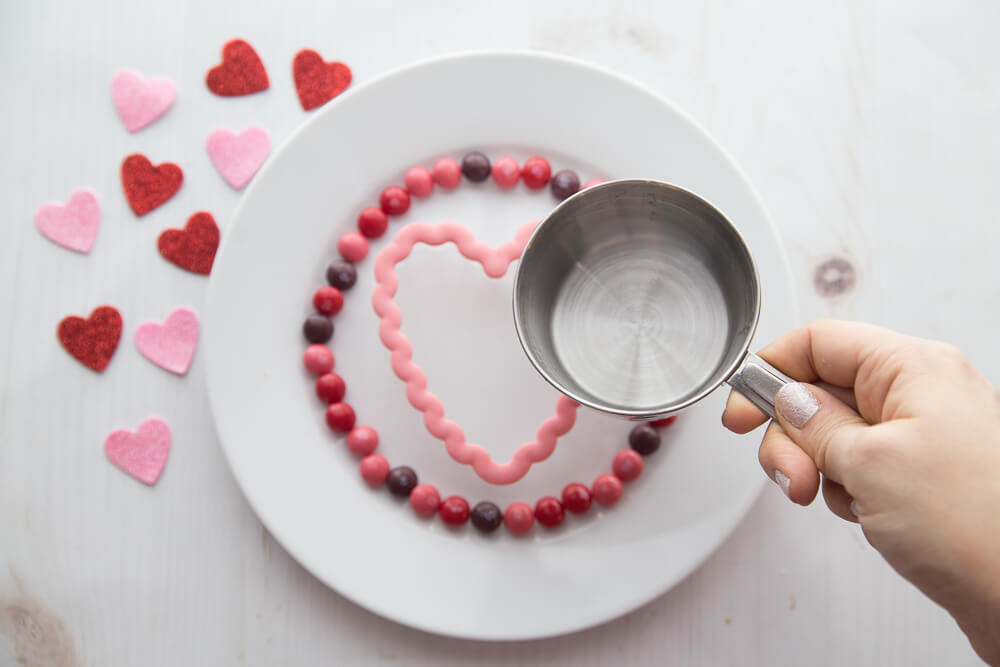
Keep your eyes peeled for the results!
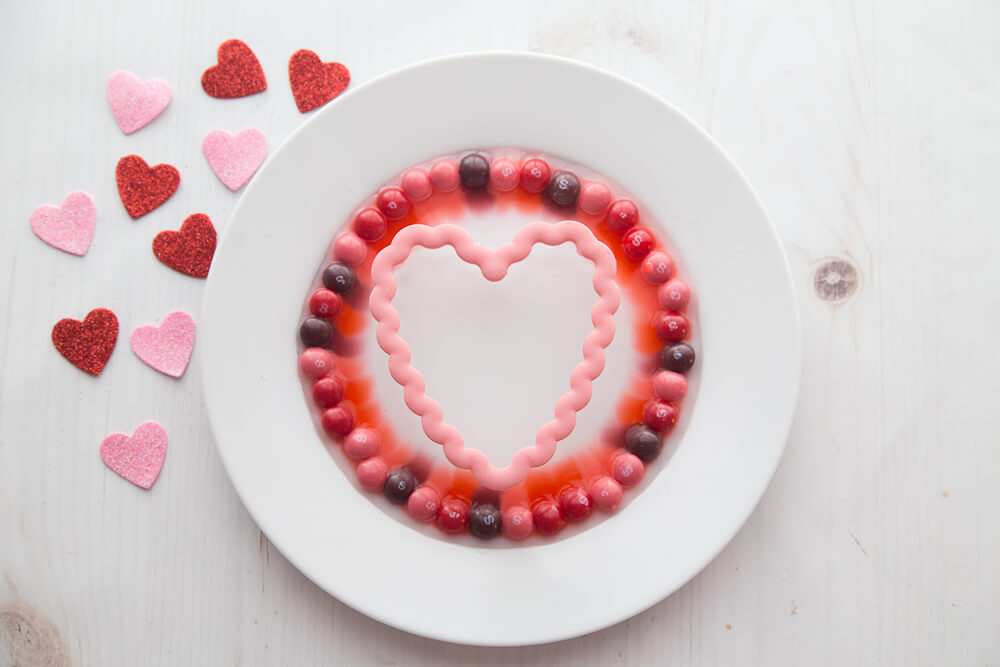
Watch as the colors stretch and bleed out away from the Skittles, coloring the water. What happened? Did they mix? What if you used clear soda instead would that change the outcome?
Note: After a while, the colors do begin to bleed together.
Apply The Scientific Method
You can quickly turn this into an experiment by changing some variables. Remember only to change one thing at a time. Learn more about choosing variables.
- You can experiment with warm and cold water or other liquids like vinegar and oil. Encourage the kids to make predictions and really observe the differences!
- Or you can experiment with different types of candies!
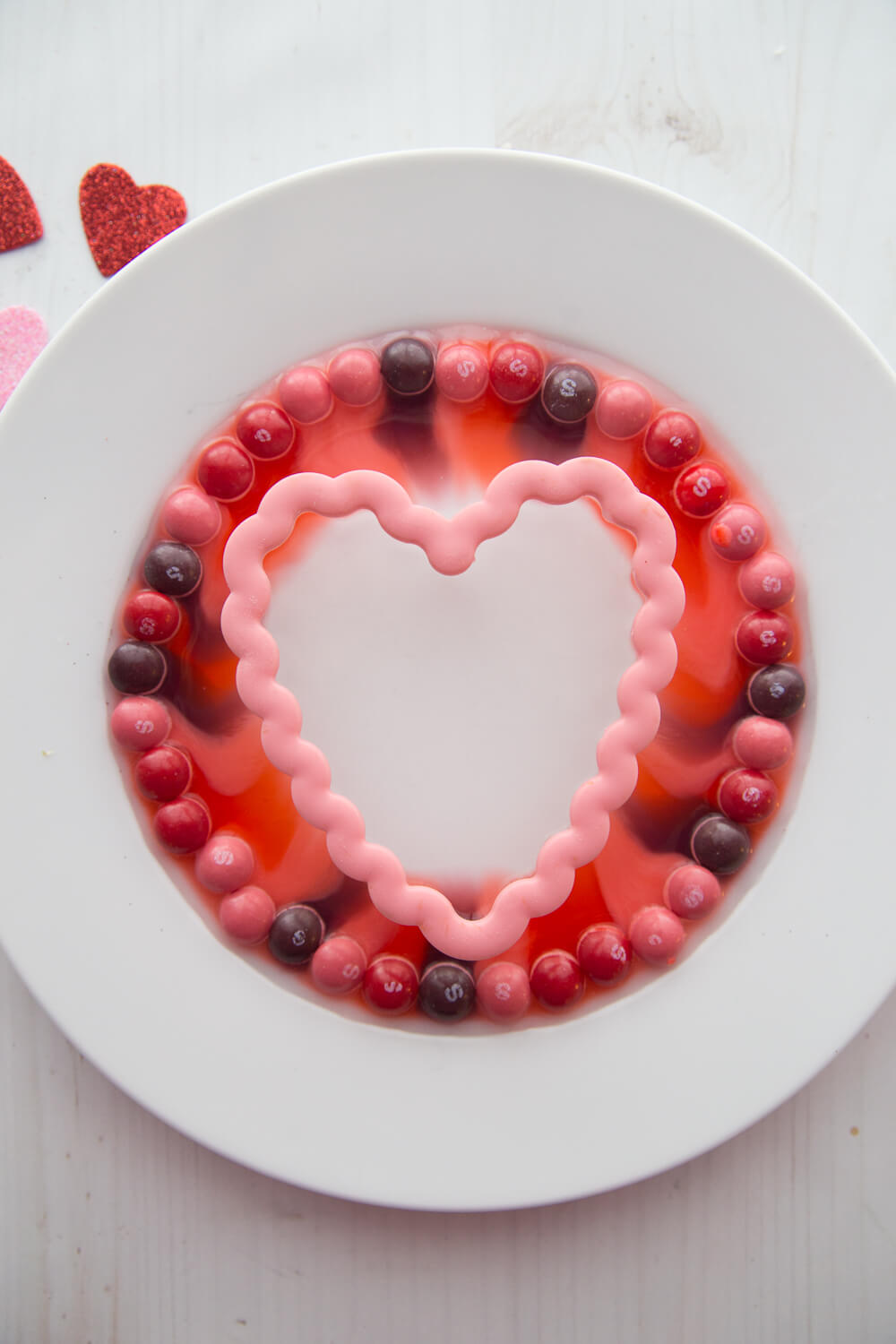
How Does It Work?
As the water makes contact with the Skittles, it begins to dissolve the sugar coating on the candies. The dissolved sugar particles then move away from the Skittles into the surrounding water.
Since the water is the area of lower concentration (less sugar), the sugar particles move from the higher concentration (Skittles) to the lower concentration (water) through the process of diffusion.
Over time, this movement of particles leads to the spreading of colors from the Skittles into the water, creating a colorful display.
Why Don’t The Skittles Colors Mix?
As the water makes contact with the sugar coating, it starts to dissolve it. However, the different colored dyes within each Skittle have different solubilities in water. Some dyes dissolve more quickly than others.
Once the sugar coating is breached, the dissolved colored dyes begin to diffuse into the water. Diffusion is the movement of particles from an area of higher concentration to an area of lower concentration.
In this case, each color of Skittle creates its own zone of higher concentration in the water. The minimal mixing is a result of the relatively slow diffusion of the dissolved dyes in water.
While this Valentines skittles science project is a simple activity for the kids, they are usually in awe of it (especially the first time they see it). Hands-on, easy to grasp, and pretty to look at it is really a great activity/experiment to include in your holiday/special occasion lesson plans.
More Fun Valentine’s Day Science Experiments
You can find all our Valentine’s Day science experiments here, including…
- Valentine Magic Milk
- Candy Heart Oobleck
- Heart Lava Lamp
- Valentines Skittles Experiment
- Dissolving Candy Heart Science
- Grow Crystal Hearts
- Water Displacement Experiment
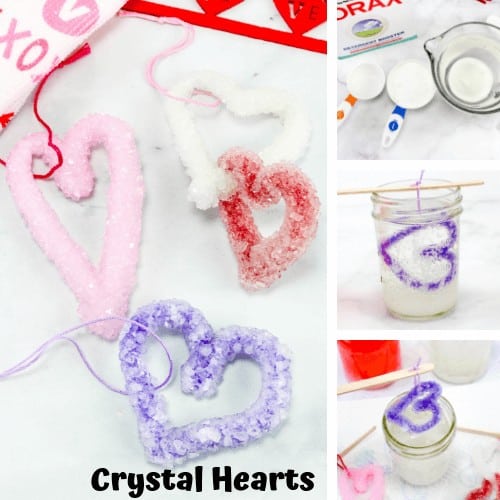
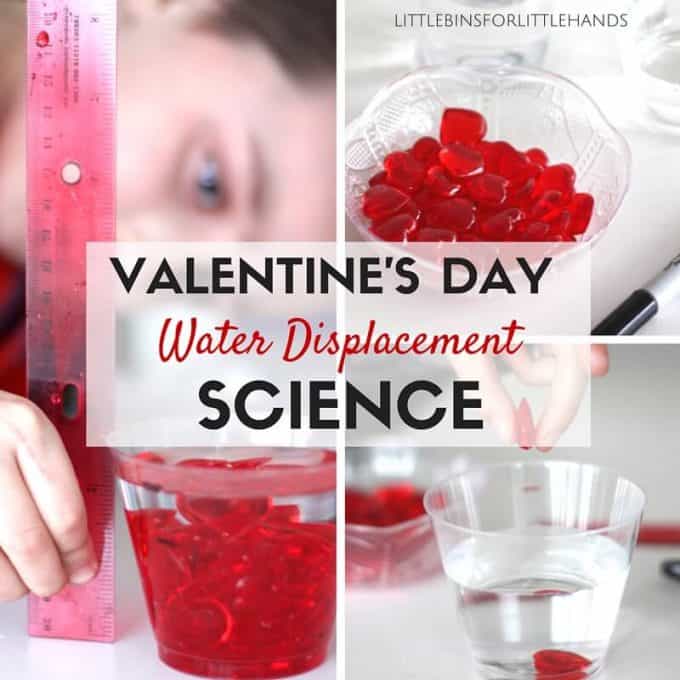

What Is Chemistry?
Let’s keep it basic for our younger or junior scientists! Chemistry is all about the way different materials are put together, and how they are made up including atoms and molecules. It’s also how these materials act under different conditions. Chemistry is often a base for physics so you will see overlap!
What might you experiment with in chemistry? Classically we think of a mad scientist and lots of bubbling beakers, and yes there is a reaction between bases and acids to enjoy! Also, chemistry involves matter, changes, solutions, and the list goes on and on.
We will be exploring simple chemistry you can do at home or in the classroom that isn’t too crazy, but is still lots of fun for kids! You can check out some more chemistry activities here. Check out the video! You can never recreate the same look twice.
Helpful Science Resources To Get You Started
Here are a few resources that will help you introduce science more effectively to your kiddos or students and feel confident yourself when presenting materials. You’ll find helpful free printables throughout.
- Best Science Practices (as it relates to the scientific method)
- Science Vocabulary
- 8 Science Books for Kids
- All About Scientists
- Free Science Worksheets
- Science Supplies List
- Science Tools for Kids
- Join us in the Club
Printable Valentine STEM Project Pack
Countdown to Valentine’s Day with science and STEM! Pack includes complete instructions, templates, and images for 20+ activities. Bonus: printable science Valentine’s Day cards!


